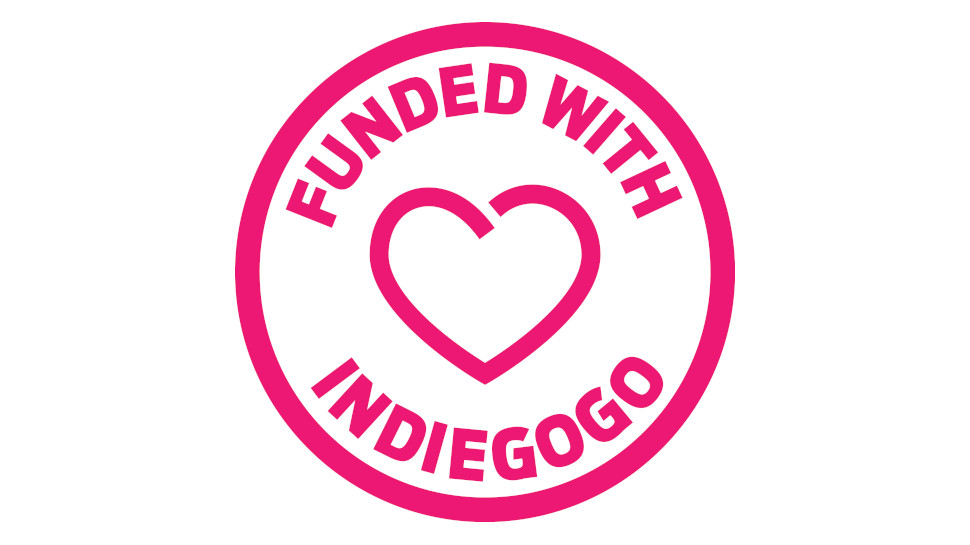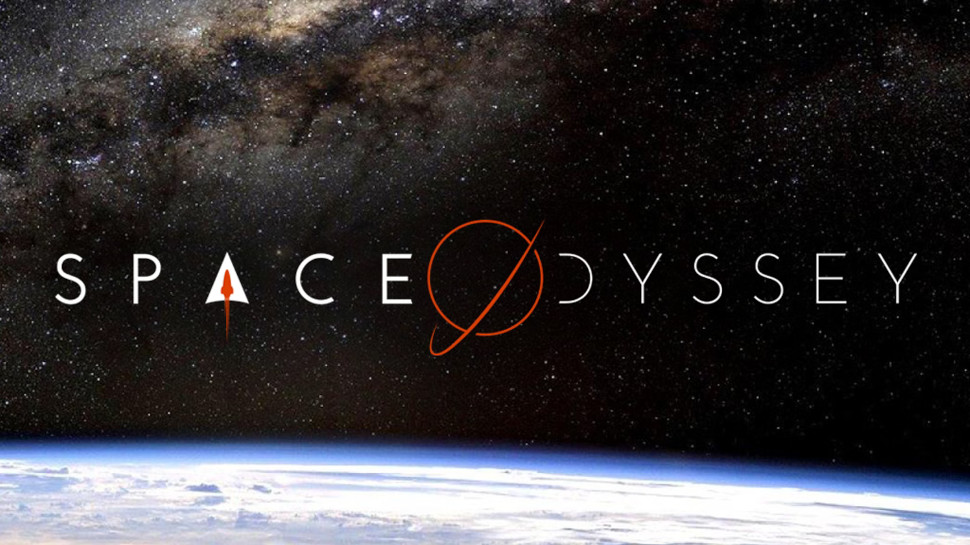When crowdfunding campaigns go bad
Is that mouth-watering new crowdfunding campaign a scam?

A year ago, an exciting new product called GigaDrive appeared on crowdfunding platform Indiegogo. It was touted as "the world's fastest external SSD” by its creators, who sought to raise $15,000 to bring their product to life.
It didn’t take long for GigaDrive to reach its funding goal. The campaign launched in March 2021 and, according to Internet Archive's Wayback Machine, raised nearly $44,000 in a matter of weeks. But this was just the start; the campaign ultimately brought in just under $1.7 million.
After the campaign finished, however, things took a turn for the worst. Although working prototypes were provided to technology publications (including TechRadar Pro) for review, campaign backers still haven’t received the SSD, now ten months after the estimated shipping date.

Updates posted on the campaign page report that the GigaDrive team encountered a variety of difficulties, including an Indiegogo investigation in response to a Forbes article, bank transfer problems and supply chain shortages. All of these issues, the company says, combined to cause the delay.
In their latest public update, posted on May 12, the GigaDrive team announced that parts they ordered for their SSDs "will arrive in 5 weeks" and that "production can begin when the [parts] arrive”.
Whether the SDDs will now be successfully manufactured and shipped is not clear, however. In the previous update, posted on February 19, the GigaDrive team estimated production would be complete "in late April/May 2022”. And back in December, they were telling people the drive would ship by the "end of Jan 2022”.
The quest for a refund
Realizing that some backers have been left disappointed and frustrated by the situation, GigaDrive has repeatedly offered refunds. Those wanting their money back were asked to complete a Google form with their information, though the links are no longer live.
Are you a pro? Subscribe to our newsletter
Sign up to the TechRadar Pro newsletter to get all the top news, opinion, features and guidance your business needs to succeed!
Many backers have left comments on the campaign page, either demanding a refund or complaining about one they have yet to receive. The GigaDrive team have left responses to some backers saying they have been reimbursed, but others have been left in the dark about the status of their refunds.
The comments section also reveals backers are frustrated with Indiegogo, not just GigaDrive, with many complaining about the crowdfunding platform’s lack of response to the floundering campaign.
A backer who spoke with TechRadar Pro said Indiegogo confirmed via support messages that it was investigating GigaDrive. Indiegogo also shared the creator's contact information, which was out of date, with the backer and informed them they could take legal action against the SSD makers.

However, the backer told us that Indiegogo did not respond to follow-up questions asking about the status of its investigation and declined to provide further information about what action it would take to help those who supported GigaDrive's campaign. They were disappointed by this and felt the lack of response did not live up to the promises made in Indiegogo's Trust and Safety page.
TechRadar Pro also reached out to the GigaDrive team via email to ask about the problems they’ve faced and their plans for going forward. However, two of GigaDrive’s email addresses no longer exist, and messages sent to a Gmail address listed on the company’s Facebook page did not receive a response.
The GigaDrive team have also ghosted their marketing agency. Artak Mkrtichyan, a PR specialist at The Crowdfunding Formula, told us that his agency has been unable to contact GigaDrive since September last year. "They have outstanding invoices to pay to our company for the work we've done on the campaign and we are preparing to take legal actions,” he explained.
So, is the campaign an exceedingly elaborate scam, as some backers have claimed? Or are the creators genuinely trying, but so far failing, to produce their SSDs? The short answer is, we just don’t know.
More disappointments
GigaDrive is not the only crowdfunding campaign that has left backers disappointed. Sites like r/shittykickstarters and Kickscammed are filled with stories and complaints about problematic campaigns.
Space Odyssey - The Video Game is one such project, featuring famous astrophysicist Neil deGrasse Tyson. It launched in 2017, promising backers the chance to "shape the game throughout the development process”, and surpassed its funding goal by over $43,000.
The project petered out in 2020, however, after running out of funds. This perhaps should have been no surprise, given the creators noted in their FAQs that the funding goal "does not cover the cost to build the game" and was instead going to be used "to begin building our community”.

The penultimate update for the Space Odyssey campaign, posted on April 10 2020, noted that most backers whose rewards included physical goods, like signed merchandise, had received them. But it seems backers whose only reward was the game itself were out of luck.
castAway, "a second screen for your smartphone", launched in 2019 and enjoyed a wildly successful campaign, smashing its funding goal of $50,000 to raise a total of $457,474. Unfortunately, the product never shipped.
In the final update, posted on July 5 2021, the creator responded to claims that the campaign was a scam. "My team is excellent, and NOBODY scammed you, and NOBODY lied to you,” he insisted, before explaining the team had simply fallen short of sales targets, in part thanks to Covid.
Understandably, backers were not happy and filled the comments section with requests for refunds, but it appears none were provided.
Fraud or not?
A crowdfunding project that reaches its goal but doesn’t send out its rewards on time, or at all, may seem like a scam to disappointed backers, but the truth may be more mundane. In fact, around 75% of successfully funded projects on crowdfunding platform Kickstarter are late sending out rewards and around 9% fail to deliver them at all, but researchers still think cases of outright fraud are relatively rare.
So why do successfully funded projects send out rewards late, or not at all, if they are not fraudulent? As one research paper put it rather bluntly, creator "incompetence...is probably the primary source” of problems. For example, creators might underestimate how much it costs to make and ship the product, not have the skills they need to coordinate with suppliers, or fail to adjust prototypes if there are issues.
These kinds of problems can worsen when a crowdfunding campaign far exceeds its goal. That’s because creators then have to produce rewards on a larger scale, which can be difficult to achieve without experience. One research paper found projects that receive ten times their original funding goal are only “half as likely to deliver at a given time, compared to projects funded at their goal”.
Zano, an autonomous drone project whose campaign launched on Kickstarter in 2014, seems to have crashed and burned for exactly these reasons.
Zano had an initial funding goal of £125,000 but in total raised over £2.3 million. When the project didn't deliver on its promises, Kickstarter hired a journalist, Mark Harris, to figure out what went wrong.

In his detailed report, Harris concluded that the creators did not have "the technical or commercial competencies necessary to deliver the Zano" and that the overwhelming success of the campaign "caused enormous difficulties”. But there was "no sign” of criminal fraud.
However, while researchers think fraud is relatively rare, it does happen. When it occurs in the US, the Federal Trade Commission can take legal action. For example, in 2015 the FTC sued Erik Chevalier, who, doing business as The Forking Path Co, launched a crowdfunding campaign on Kickstarter for a board game called The Doom that Came to Atlantic City.
Chevalier initially asked for $35,000 to create the game, but ended up raising over $122,000. The game was meant to ship in November 2012, but despite updates claiming he was making progress, Chevalier canceled the project in July the following year. He claimed he would refund backers, but failed to deliver on the promise, says the FTC.
Worse, the FTC argued that instead of using the funds raised via crowdfunding for the development of the game, Chevalier used them "for miscellaneous personal equipment, rent for a personal residence, and licenses for a separate project”.
The suit was settled with a judgment of $111,793.71 against Chevalier, though this was suspended because of his lack of funds. He was also ordered not to misrepresent any claims in future crowdfunding campaigns and to comply with refund policies.
Fortunately, this case had a happy ending for backers. Chevalier didn’t actually design the game, so when the project was canceled the rights went back to those who did: Keith Baker and Lee Moyers. The pair then worked with Cryptozoic Games to put the product into the hands of the backers.
What are platforms doing to protect backers?
A crowdfunding campaign that fails to deliver on its promises is a source of disappointment and frustration to its supporters, whether it's fraudulent or not.
To see what crowdfunding platforms are doing to protect backers, TechRadar Pro reached out to Kickstarter and Indiegogo, two of the largest companies in the space. Kickstarter did not respond, but Will Haines, VP Product & Customer Trust at Indiegogo, provided comments via email.
Haines told us that all Indiegogo campaigns go through an initial review process "for compliance with our terms of service and to verify identity and bank account information before the campaign owner receives access to their funds”. He explained that "our most visited campaigns as well as those with riskier attributes (e.g. high price points or complex designs)" are subject to additional reviews that "go beyond compliance and focus on the ability of the campaign to fulfil its promises to backers”.

Haines also said that Indiegogo has started giving out Trust-Proven badges to "repeat entrepreneurs who have a demonstrated history of successful fulfillment”. The badge is visible on the campaign pages of creators who have earned them, helping potential backers to identify trustworthy campaigns.
Indiegogo's terms of use state that the company will provide backers with the names and contact information of creators if they go quiet or if there is a dispute. Its community guidelines also state that the platform may report creators who fail to provide backers with monthly updates to collections agencies.
When asked how Indiegogo uses these tools and how successful they have been, Haines remarked, "over the past year we have been more aggressive about providing backers with transparent project status and contact information when we determine that entrepreneurs have gone silent”.
"In practice, the threat of actions like collections have been most helpful as a mechanism to encourage good behavior, but we have also had some successful collections actions that allowed us to return funds to some backers,” he added.
However, it’s worth bearing in mind that both Kickstarter and Indiegogo emphasize they are not stores and backers are not buying a product. They are, instead, supporting a creative project. This means that backers are expected to evaluate a campaign themselves and understand that supporting a project comes with the risk it may not deliver as planned.
What can backers do to protect themselves?
Evaluating a campaign and understanding the risks associated with supporting it can be tricky. Backers have to decide whether to support a project based primarily on information presented on the campaign’s crowdfunding page, which may not provide them with an accurate picture of the project’s status. So what can backers do to protect themselves?
Lars Hornuf, a professor at Universität Bremen in Germany who researches crowdfunding, recently published a paper that identifies several red flags associated with fraudulent Kickstarter campaigns.
Hornuf told TechRadar Pro in an email exchange that, to avoid such campaigns, backers should “look at the profiles of those seeking capital as if they were buying something on an ecommerce platform”.
He also advised potential backers to ask questions such as:
- Were the project creators active on Kickstarter before?
- Are there any connection or links to the outside world?
- Has the campaign been running for a long time without coming to a successful end?
If backers only identify a red flag after a campaign they've supported is successfully funded, they should reach out to the crowdfunding platform and the creator of the project. While crowdfunding platforms won’t usually issue refunds, the creators of the campaign can. Of course, if there is something shady going on, backers likely won’t receive a response.

In that case, as the terms of service for both Kickstarter and Indiegogo make clear, backers can take legal action against the campaign creators. However, in practice, backers may choose not to pursue this option, especially if they only pledged a small amount, given that doing so can be time-consuming and difficult.
In the US, backers can also report fraudulent campaigns to the FTC and the Attorney General of their state. A Freedom of Information Request made by TechRadar Pro revealed that, as of April 19th 2022, six GigaDrive backers had filed complaints against the company with the FTC. We don’t know, however, whether the FTC is investigating the campaign at this time.
A look to the future
As fraudulent and incompetently managed campaigns are harmful to backers, we may wonder what crowdfunding platforms can do differently to keep their communities safe.
One such option researchers have investigated is for platforms to stop campaigns once they reach their funding goal and not allow them to be overfunded. Additional demand for the product could then be met once it has been successfully developed.
Hornuf told TechRadar Pro that "it can make sense to initially only raise as much capital as is really needed to develop the product or service," especially when "some creators have such good ideas that they receive far more funding that they initially wanted and later have trouble getting the product to customers in time”. He also noted that this approach could prevent would-be scammers who "don't even think of running away with the money until they've collected a very large amount”.
A second, similar option is for platforms to allow a campaign to raise more than its goal amount, but to withhold the funds raised beyond the goal, only releasing them once the product has been successfully developed. If the development process fails, then those funds could be used to refund backers.
Asked whether he believes either of these proposals could work in practice, Haines said, "both ideas are interesting but I don't think they would work as proposed”.
"Many entrepreneurs use Indiegogo to start ongoing businesses rather than for limited projects. Highly successful campaigns also need additional funds to manufacture additional units, so it wouldn't be viable just to hold all funds above the goal amount,” he explained.
However, Haines noted that "as campaigns reach their goal and move from design to production a version of this idea where we transition from a fixed goal to a per-unit reserve fund could be a good middle ground”. He was also positive about looking at new ways to protect backers.
The crowdfunding space is far from perfect. While crowdfunding platforms have mechanisms in place to protect potential backers, fraudulent campaigns can slip through and many honest campaigns still fail to deliver rewards on time, with some never delivering at all.
We can hope that better protections will be developed in the future, but in the meantime, potential backers should be careful when evaluating campaigns and only support them if they are comfortable with the risks involved. For now, then, caveat emptor, let the buyer beware.
Rebecca Morris is a freelance writer based in Minnesota. She writes about tech, math and science.
